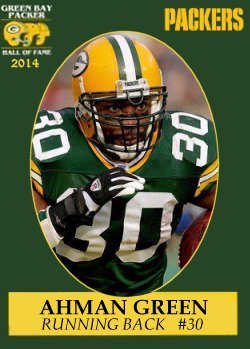31 has been worn by several good players in Green Bay, but it will always be Jim Taylor’s number. Taylor, probably the greatest runner the team has ever had, wore the number the longest-nine years– and with the most distinction. He and guard Mike Michalske are the two Hall of Famers to don the number. 31 has also been worn by seven members of the Packer Hall of Fame: Taylor, Michalske, Verne Lewellen, Nate Barragar, Fred Cone, Bob Mann and Gerry Ellis.
31 was worn first by back Verne Lewellen (1929-30). He was joined in the Lambeau era by seven linemen: tackles Roy Jennison (1931) and Joe Kurth (1934); guards Clyde Van Sickle (1932) and Michalske (1933); centers Barragar (1931 and ’35) and Roger Harding (1949); and end Ace Prescott (1946). The longest gap was from 1936-45.
Since 1949, the number has been worn by one wide receiver, nine running backs and six defensive backs:
WR: Bob Mann (1950-51).
RBs: Bill Boedecker (1950), Fred Cone (1952-57), Jim Taylor (1958-66), Perry Williams (1969-73), Jim Culbreath (1977-79), Gerry Ellis (1980-86), Tony Hunter (1987r), Allen Rice (1991) and Buford McGee (1992).
DBs: George Teague (1993-95), Rod Smith (1998), Fred Vinson (1999), Chris Akins (2000-01), Al Harris (2003-09) and Davon House (2011-14, 2017).








Custom cards of Lewellen, Barragar, Cone and Culbreath are colorized.


















































